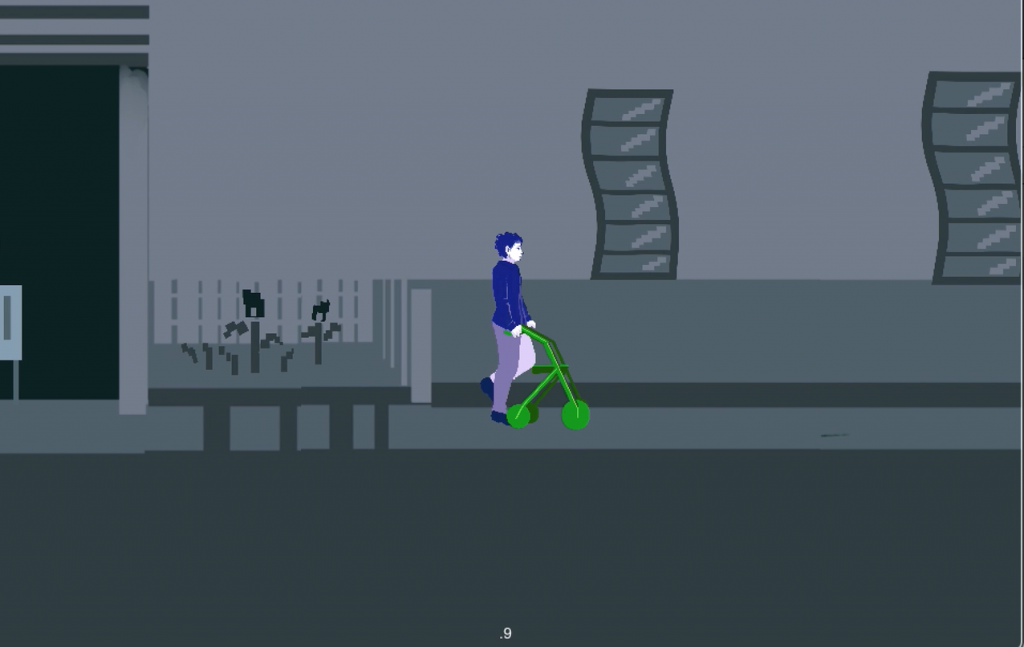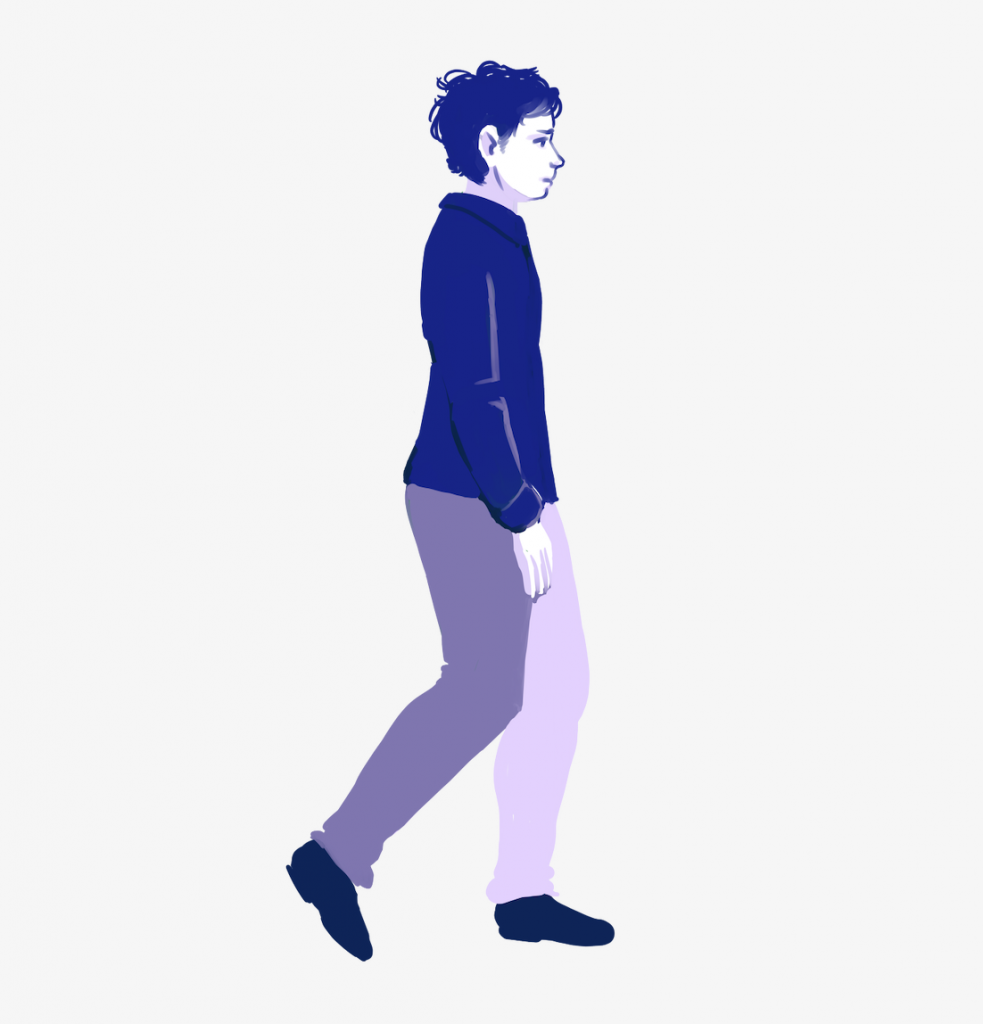But what if you cannot walk (far)?
To play the early development build of the game, click here!

What do you do?
Take a walk!
How do you do it?
Movement: Arrow keys, WASD
Reset: R
Close: Esc
Interact: Space, Enter

What is it about?

Part 1 – Disability in Games
Chronic pain and chronic fatigue are fascinating to try and portray in a game. Disability in general, when suggested to have in a protagonist, are met with the immediate two questions:
- But won’t that make it boring?
- So how do we compensate for it, except for magic and scifi?
I always feel like that is just a lack of imagination. A disability can be made into a concrete artistic expression, a game mechanic, a learning moment… Whatever it needs to be to have an official permission to exist.
Or, as is my take, it can also just exist in a game because humans are diverse. We have come to a point where we no longer feel like we have to justify women being in games, or diverse skin colors, LGBT+ folks, etc. (even if there will always be people who want to demand that explanation from us, we do not owe it to them). We do not need to think of clever excuses for portraying human variety in our characters (and protagonists).
Yet most game developers shy away from disability, unless they can replace that lost arm with a big scifi cannon, or the blind character can use supernatural senses, or the paralysed girl has a mech suit/external skeleton…
Why not just. I don’t know. A wheelchair? A normal wheelchair.
Wheelchairs tend to be scary to a lot of people. They are considered something you are “bound” to. But to those who use them regularly, or even exclusively (most wheelchair users can walk to some degree), they are freedom on wheels.
In this game, you can walk. But it sucks. It’s painful, frustrating and does not feel very good. Using the different mobility aids will all get you out of the house, but only one of them can get you all the way to the other side.

the mobility aid they really need
Part 2 – Walking Simulators
This tongue in cheek descriptor is one that, in my studies, I have heard as a very neutral term. However, when that one guy in the lecture needs to talk about how only certain games are good because he likes them, and the game we are discussing is bad because it lacks interaction, he will usually call it a “walking simulator”. Then this term sounds much more mean and biting.
I grew up playing various games of various quality and genre. My favorite games are all action packed and full of storytelling in every level of design. But when I first played Gone Home by Fullbright and Firewatch by Campo Santo, I was just as fascinated. They reminded me of puzzle games, just without the repetitive puzzle bits. Just the story being pieced together as you explore.
Now, walking simulators to me is not as bad a word as to many, but of course the title here is very tongue in cheek. Why not a walking simulator where figuring out how to walk is the big interaction of the game?
Game Mechanics
The game is a simple side scroller: you go from left to right and explore. But the longer you go, the more tired you become, so eventually you just cannot go any further to the right and must return to a rest spot.
Depending on which mobility aid you choose, you can go further right before needing a break. The mobility aids each change how quickly you exhaust.
Once you pick one, you cannot go back to playing without, however you can switch between the three at will: Wheelchair, rollator and crutches.
The game was made in Unity 2D. Self programmed from scratch, animated, composed and designed.






